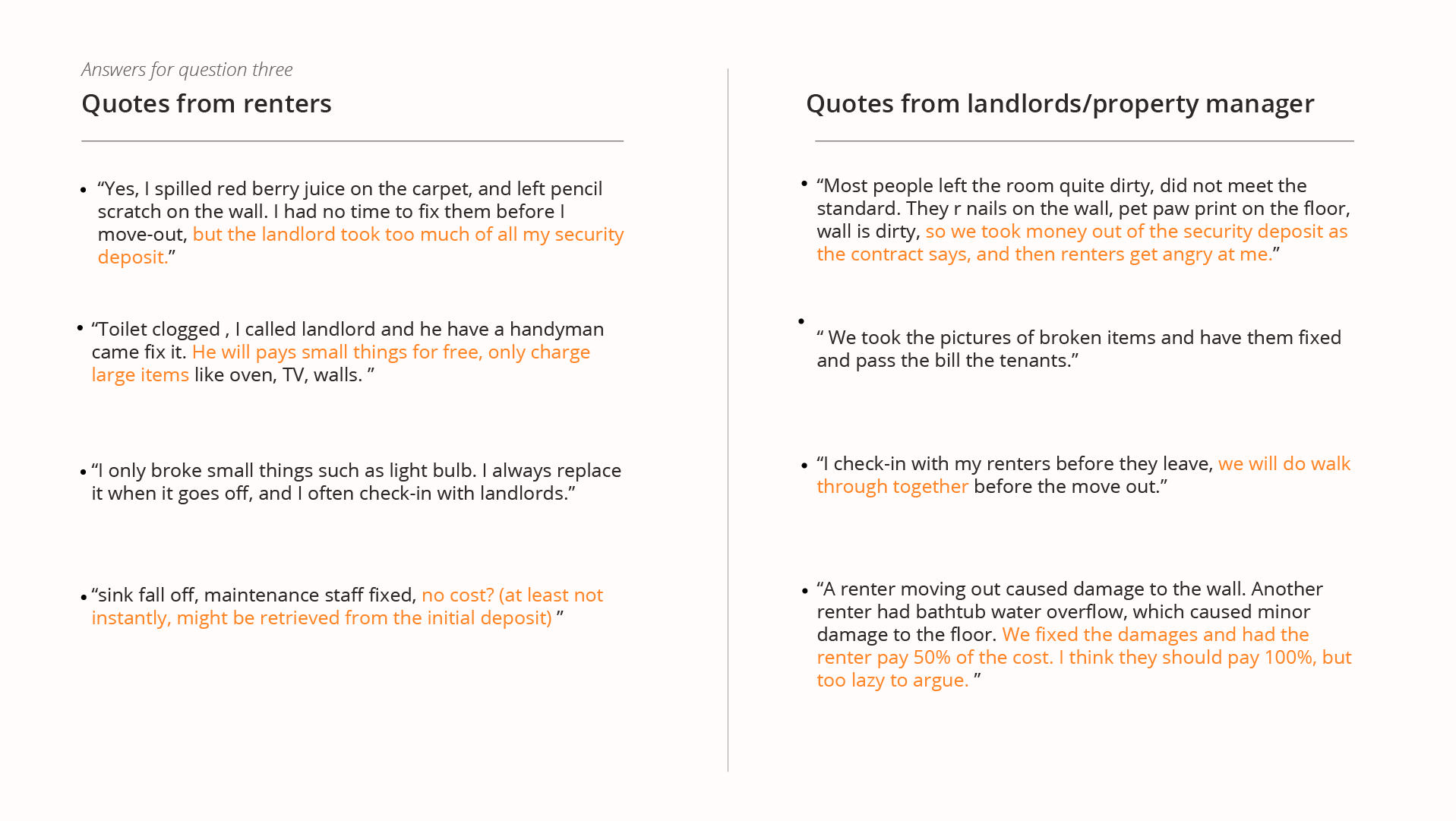
Moving into a new apartment is a hassle, and an involved process. On the day a renter gets their keys, they do an initial walk through with their landlord to document flaws that they don’t want to be held responsible for. This process is manual and a “black box”. There’s no guarantee of a landlord keeping a record of that, which often results in them charging renters upon moving out for damage they didn’t create. So we create a convenient experience for documenting status of items in the room to make sure the landlord and the renter are on the same page on condition of all items in the room when renters move in, and then use the same tool for move-out walkthrough to document any damaged items, send to the landlord for review, and confirm security deposit return.
July 7th - August 1st 2020
Figma, PS, AE
Joey Ianni & Fan Sun
1. Have landlords/property managers suggested renters to check the condition of the place they are going to rent?
2. Do renters keep photo evidence of items in the place before they moved in?
3. When renters move out of the place with damages, how does the communication work between the landlord and the tenant to get issues/disputes resolved?
I did a online survey. I tried to keep our sample population diverse in age and occupation. This practice ensured that our data would capture a wide range of perspectives from which several pain point patterns emerged.
Landlords/Property managers (50)
Renters (50)
Understand renter’s current experience of inventory check and property walkthrough during move-in and move-out time. Investigate property damage liability during move in and move out time from a landlord’s perspective.

1. 92.5% of landlords suggest checking home before moving in to their tenants while
40.6% renters get that reminder in their experience.
2. 45.3% of renters did not keep any documentation for items before they move in to a new place.
1. Lack of communication about inventory check during move in time could cause disputed charges during move out between the landlord and the tenant.
2. Renters are unaware of making inventory when they move in.
1. Bridge the gap of communicating inventory check during move-in and move-out time among the landlord and the renters.
2. Provide better education and inventory check experience to renters to prevent unnecessary charge upon moveout that was not their fault.
1. Help bridge the gap of inventory communication by guiding renters to log items upon move in and report to landlord in a timely manner.
2. Facilitate smooth move out experience between the landlord and the tenant by revisiting inventory, payments, addressing damages (if any), and confirming security deposit return.
We formed our persona based off our renters, which helped us to define a minimum viable product service solution.
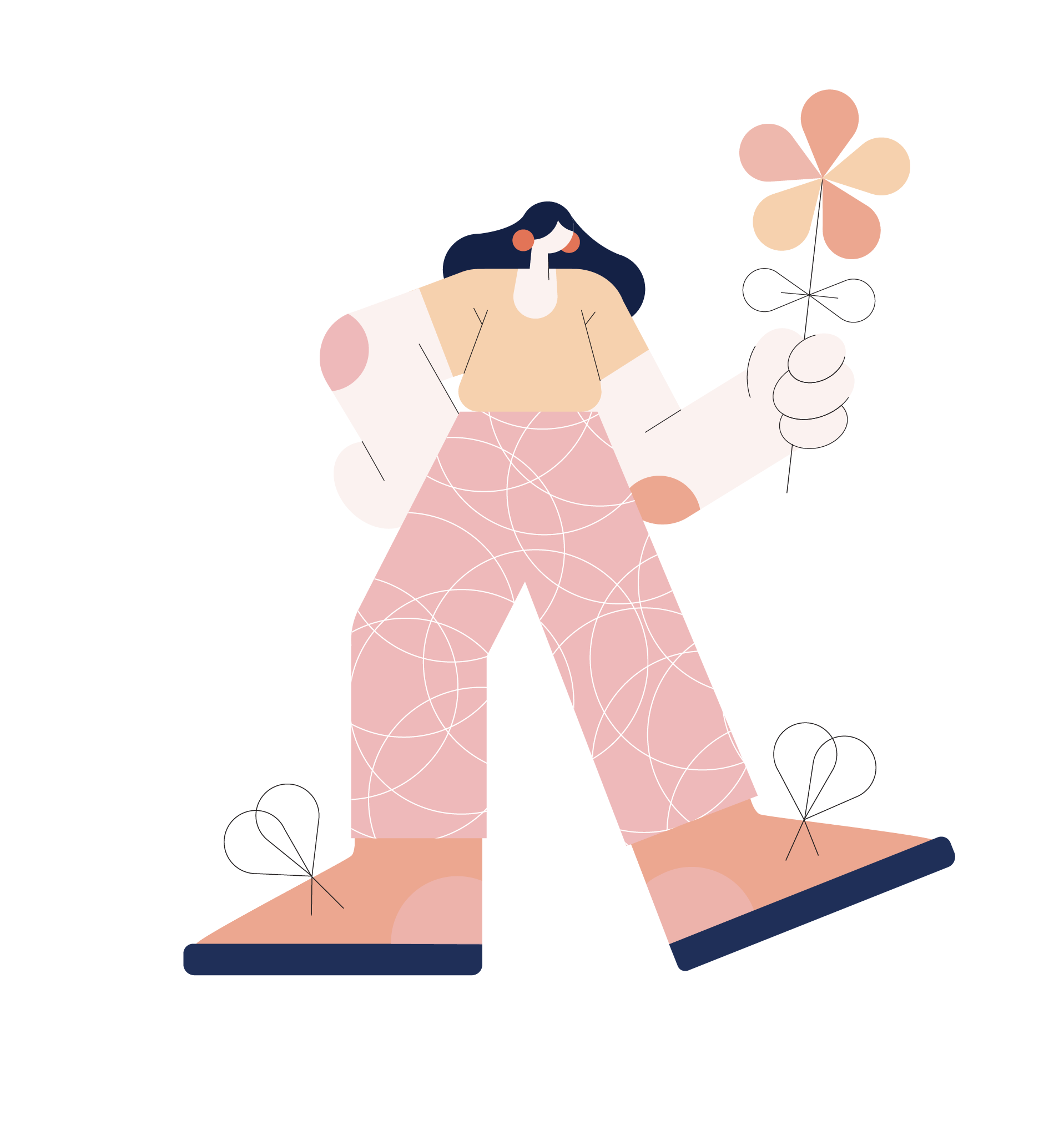

Kattie is a 22 years old student graduate school student who just moved from Pittsburgh to NYC. She is a very tidy person: she always map the floor, wipe tables, and throw her food waste to make the rooms at home clean and tidy. Kate’s goals are:
1. Document every item in the room to avoid future conflicts with landlords.
2. Keep good communication with the landlord.
3. Make the room as tidy as possible when she move-out to get her security deposit back.
John is a 52 years old dentist who owns five properties in Cary North Carolina. He works five days a week, and sometimes overtime. He feels managing five properties is very time consuming for him: he need to communicate with the renters and the maintenance companies. his goals are:
1. Become more organize: make sure he have the prove for all their items in one place.
2. Be a responsible landlord, respond to renter’s problems as soon as possible, and sure damaged items (if any) are fairly charged.
In reference of my user interviews and personas, I began to map out the key stages. I experimented around with the level of intelligence the app: should Root app be able to not only document the appearance of item, but also document the weight of all items? The workflow suppose to improve:
1. Onboarding experience to raise awareness of inventory check upon move in.
2. Highlight items for renters to look out for (easy-to-damage area that may cause dispute upon move out) to prevent unnecessary charges upon move out.
3. Facilitate communication between the landlord and the tenant.

In reference of my user workflow map, I started to sketch out the first page of all the key parts. I want to make the copy each page as straight forward as possible, so user can easily follow the workflow. In addition, I try to make all the copy more conversational to engage user.
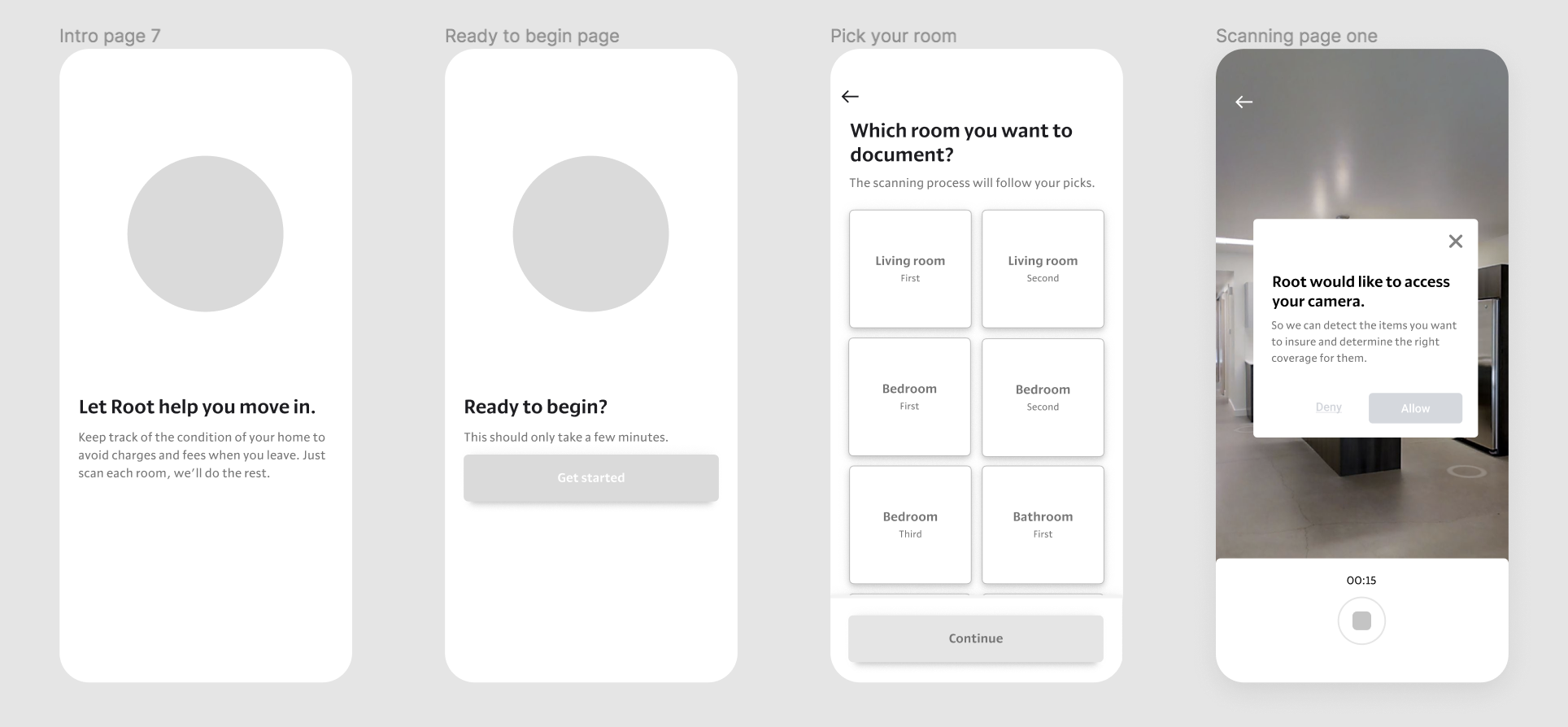

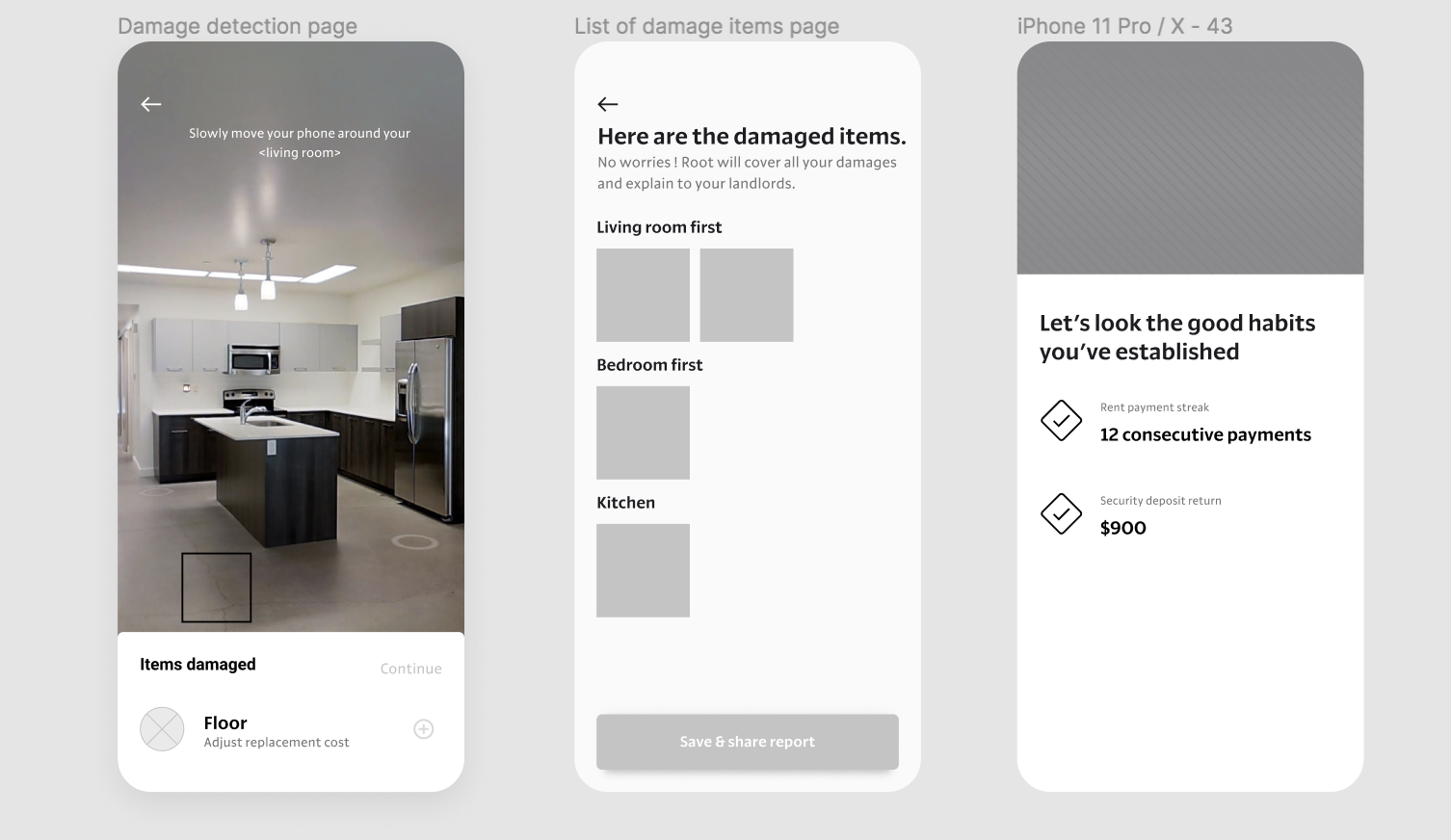
I did a round of internal design review, and got insights from different departments. The design team suggested team suggested the workflow had too many steps, and suggested me to combine pages with too little informations. If the documentation process is too long, users will lost motivation to finish it.
The goal is to use microinteraction consciously and carefully with the goal of aiding comprehension and bringing delight.

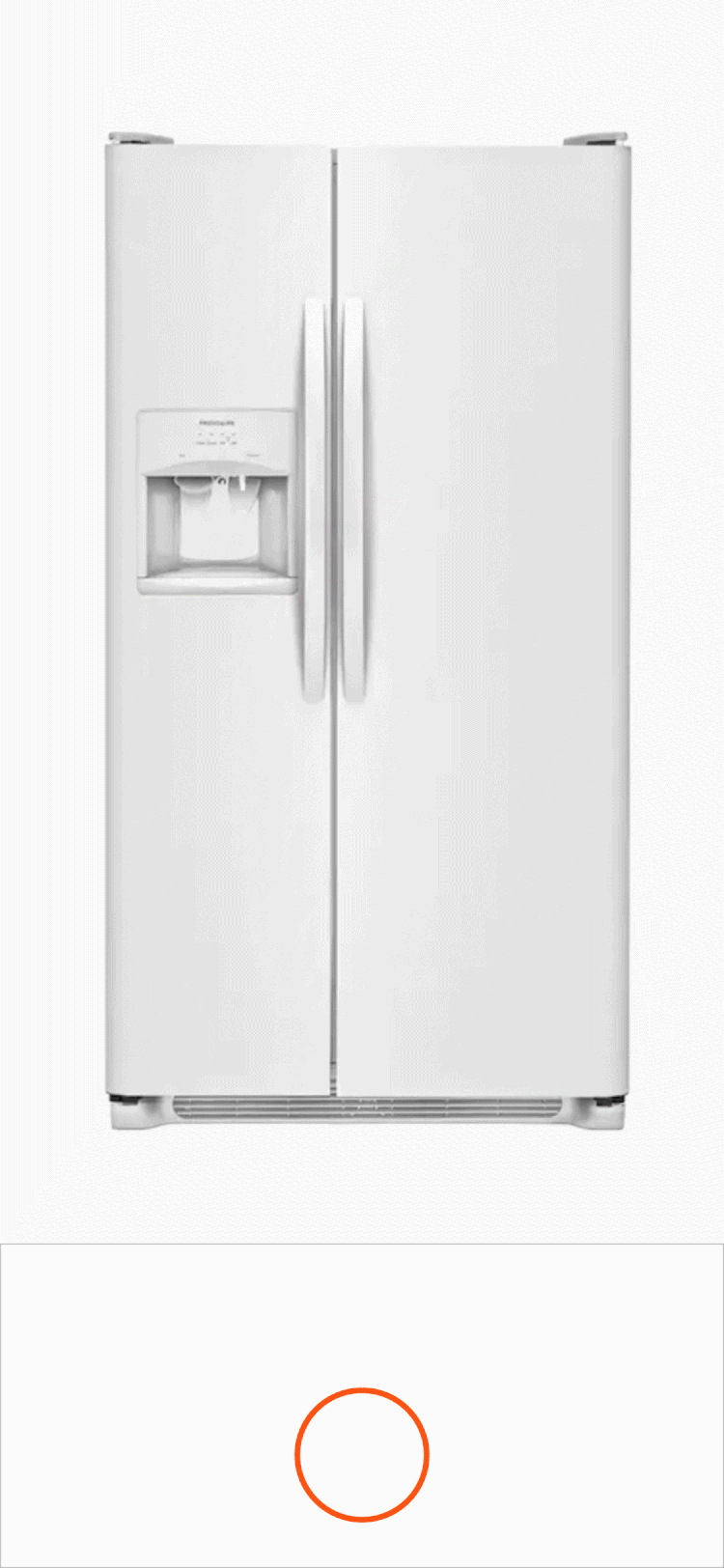


1. Test interaction: conduct usability testing to see if my solutions work.
2. Track conversion: roll out test to see if this workflow helps convert more customers in the Root app to purchase renters insurance.